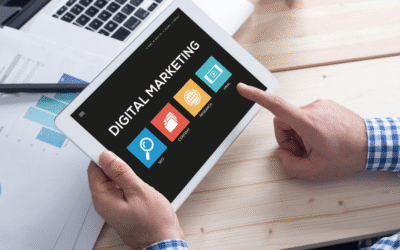Many marketers fall prey to common myths that can derail your digital marketing efforts. As we step into 2024, it’s crucial to separate fact from fiction and discover what truly drives results in the ever-evolving digital landscape. This post will debunk widely held misconceptions and reveal effective strategies that align with current trends, ensuring you can optimize your campaigns for maximum impact. Get ready to empower your marketing strategy with actionable insights that really work this year!
Key Takeaways:
- Quality Over Quantity: In 2024, focus on creating high-quality content that engages your audience rather than just increasing the volume of posts.
- SEO is Still Essential: Search Engine Optimization remains a critical component of digital marketing; however, the emphasis on user experience and content relevance has become more prominent.
- Social Media Algorithms Favor Authenticity: Genuine interactions and authentic branding are favored in social media algorithms, proving that transparency and relationship-building matter more than ever.
How-To Debunk Common Digital Marketing Myths
Before plunging into the reality of digital marketing, it’s crucial to recognize and debunk several prevalent myths that can mislead you in your strategic decisions. These misconceptions can derail your marketing efforts and lead you to invest time and resources in ineffective strategies. By understanding and debunking these myths, you can develop a more effective marketing plan tailored to your business needs in 2024.
Understanding the Myth of “More Traffic Equals More Sales”
One of the most pervasive myths in digital marketing is the assumption that increasing traffic to your website will directly translate into higher sales. While it’s true that more visitors can provide more opportunities for conversions, the quality of that traffic is far more important than quantity. Attracting the right audience—those who are genuinely interested in your products or services—is necessary for achieving sustainable sales growth. If your site is flooded with disinterested visitors, the chances of converting them into paying customers remain grim.
Furthermore, focusing solely on traffic can distract you from optimizing other crucial elements of your digital marketing strategy, such as user experience, product value, and customer engagement. Instead of merely chasing numbers, prioritize attracting and converting the right audience, ensuring that your marketing efforts yield meaningful results.
The Truth Behind Overemphasizing SEO
Little do many marketers know, an overemphasis on SEO can lead to misallocation of resources that might better serve other aspects of your marketing efforts. Search engine optimization is undeniably important, yet becoming too fixated on ranking boosts can obscure the bigger picture. Many businesses invest significant time and money into crafting keyword-rich content or optimizing their sites for search engines while neglecting fundamental elements like customer service, product quality, and client relationships—factors that foster brand loyalty and repeat business.
Common pitfalls include chasing after fleeting trends instead of focusing on enduring quality content and genuine audience engagement. Thus, while SEO should remain a vital component of your marketing strategy, it’s equally important to balance it with broader business growth strategies that include community building and lead nurturing.
Why Email Marketing is Not Dead
An alarming myth circulating in the digital marketing arena is the belief that email marketing has lost its efficacy and relevance in today’s tech-savvy world. Contrary to this notion, email marketing continues to be one of the most powerful tools you have at your disposal. A well-crafted email campaign can not only achieve higher conversion rates but also foster lasting relationships with your customers through personalized communications. Email, when executed correctly, serves as a direct line to your audience, offering unparalleled opportunities for engagement and conversion.
Email marketing is thriving due to its cost-effectiveness and ability to provide measurable results. Brands that utilize targeted email strategies often see impressive ROI, reaffirming that email marketing remains far from obsolete. If you’re not leveraging email to communicate with your audience, you’re likely missing out on a significant growth opportunity.
Dispelling the Social Media Overload Myth
Myth: You must be active on every social media platform available to succeed in digital marketing. This is a misconception that leads many businesses to spread themselves too thin in their efforts to engage audiences. While maintaining a presence on multiple platforms can be beneficial, the truth is that being active on the right platforms for your audience is far more impactful than sheer volume. It’s about quality over quantity—selecting the social networks where your target audience spends their time and engaging with them effectively on those platforms.
By concentrating your efforts on the most relevant social media channels, you can allocate your resources more effectively to create compelling content that resonates with your audience and yields better engagement. Meaningful interactions on a select few platforms can establish your brand as an authority and build a loyal community, countering the myth that more social media presence equals better marketing.
Media spending time and effort on platforms that do not align with your audience can lead to wasted resources. Focus on understanding your target demographic and invest in relatable, high-quality content on platforms that matter to your customers, ensuring that your marketing strategy is both efficient and impactful.
Tips for Effective Digital Marketing Strategies in 2024
Even as digital marketing continues to evolve, certain strategies consistently yield strong results. By focusing on the following tips, you can enhance your digital marketing efforts and achieve better results in 2024:
- Embrace personalization in your campaigns
- Utilize video content as a key tool
- Engage effectively with influencers
- Integrate content marketing across various channels
- Leverage data analytics for informed decision-making
The digital landscape is always changing, so staying current with trends while experimenting with new strategies will help you stay ahead of the competition.
Leveraging Personalization for Better Engagement
Little things can make a big difference when it comes to engaging your audience. Personalization allows you to tailor your messages, offers, and content to meet the specific needs and interests of your target customers. By using data analytics and customer insights, you can create a more individualized experience that resonates deeply with your audience. This approach not only increases engagement rates but also boosts brand loyalty as customers feel more valued.
Moreover, you can refine your targeting strategies to ensure that your personalized content reaches the right people at the right time. Utilizing segmentation based on behavior, preferences, or demographics can further enhance your efforts. Implementing personalization strategies may require more resources upfront but the long-term benefits, including improved customer satisfaction and increased ROI, are well worth the investment.
The Power of Video Content in Your Marketing Mix
Some forms of content are more impactful than others, and video content has proven to be one of the most effective mediums in digital marketing. In 2024, video remains crucial for engaging your audience, as it enables you to convey complex information quickly and efficiently, appealing to both auditory and visual learners. By integrating video into your marketing strategy, you can better capture attention and enhance comprehension of your message.
Moreover, video content is highly shareable, increasing the likelihood that your message will reach a wider audience. Whether it’s through live videos, explainer videos, or customer testimonials, the demand for video content is only set to grow. Therefore, making video a staple in your marketing mix should be a priority in 2024.
A recent study revealed that incorporating video into landing pages can increase conversions by up to 80%. This statistic underscores the importance of this medium as you formulate your marketing approach for the year ahead. Investing in high-quality video production and focusing on storytelling can help elevate your brand’s visibility and connect you with your audience on a deeper level.
Utilizing Influencer Partnerships Effectively
Effective influencer partnerships can greatly enhance your marketing strategy, providing you with access to new audiences while leveraging trusted voices in your industry. When you collaborate with influencers who align with your brand values, you can create authentic connections that resonate with potential customers. Choosing the right influencers and working with them strategically will help you tap into their followers, thereby boosting your brand’s credibility and awareness.
Additionally, developing long-term partnerships with influencers rather than one-off campaigns can foster deeper engagement. By creating a consistent, authentic presence in the influencer’s content, you encourage your audience to trust and connect with your brand over time.
With the growing popularity of micro and nano influencers, you have more opportunities to create meaningful relationships that can lead to higher engagement rates. These smaller influencers often have loyal and engaged audiences, providing a greater chance of converting followers into customers.
Integrating Content Marketing with Other Channels
Effectively integrating your content marketing strategy with other digital channels is important for achieving a cohesive brand message. By aligning your content with social media, email marketing, SEO, and other platforms, you can create a comprehensive approach that enhances your visibility and reach. This synergy will help you streamline your marketing efforts and ensure that your audience receives a consistent message across all channels.
For example, by sharing your blog posts through social media, you can drive traffic back to your website while simultaneously engaging your audience where they are most active. Additionally, repurposing content for different formats can maximize its reach and efficiency. Whether via infographics, podcasts, or video snippets, exploring various formats can ensure your content resonates with diverse audience preferences.
To maintain a seamless integration, consider utilizing marketing automation tools that allow you to schedule and distribute your content across multiple platforms with ease. The more cohesive and integrated your strategy, the more effective your marketing efforts will be in 2024.
Key Factors to Consider in Digital Marketing Success
Not every strategy you come across in the digital marketing realm will yield the desired results. As an industry constantly evolving, several factors influence your success in this space. By focusing on the key elements that genuinely drive results, you can refine your approach and ensure you’re on the right path. Here are some key factors to consider:
- Importance of Data-Driven Decision Making
- The Role of Mobile Optimization in Reach
- Understanding Customer Journeys and Touchpoints
- Aligning Marketing Goals with Business Objectives
Knowing what really works will help you navigate the complexities of digital marketing effectively.
Importance of Data-Driven Decision Making
Little room is left for guesswork in the digital marketing arena. Leveraging data allows you to identify trends, measure performance, and adjust your strategies accordingly. By analyzing data derived from your campaigns, conversion rates, and user engagement, you can glean insights that guide your future decisions. This empirical approach not only enhances your marketing effectiveness but also helps you allocate resources more efficiently.
Moreover, using data analytics tools enables you to investigate deeper into customer behavior and preferences. Customizing your marketing efforts based on hard evidence fosters a stronger connection with your audience, driving better engagement and higher conversion rates. It’s a pivotal step toward fostering long-term customer loyalty.
The Role of Mobile Optimization in Reach
For marketers today, mobile optimization is no longer optional; it’s imperative. With mobile devices accounting for a significant share of online traffic, ensuring that your website and advertisements are mobile-friendly can vastly improve user experience. A seamless mobile interface makes it easier for users to navigate, engage, and ultimately convert, helping you reach a broader audience.
Consider the fact that many users access content on-the-go. If your site is sluggish or difficult to navigate on a mobile device, you risk losing potential customers to competitors who have prioritized mobile responsiveness. As you develop your digital campaigns, mobile optimization should be top of mind in order to maximize your reach and effectiveness.
Understanding Customer Journeys and Touchpoints
Any successful digital marketing strategy hinges on your understanding of customer journeys and their various touchpoints. Each stage of the consumer experience offers unique opportunities for engagement, persuasion, and conversion. By mapping out these journeys, you can identify where your customers most commonly interact with your brand, allowing you to tailor your content and marketing efforts accordingly.
A deep understanding of these journeys also enables you to enhance customer satisfaction. By ensuring that each touchpoint serves its purpose—in gaining interest, delivering value, and encouraging loyalty—you create a smoother path for potential customers to follow from awareness to purchase.
Aligning Marketing Goals with Business Objectives
Optimization of your marketing strategies becomes vastly more effective when you align your goals directly with your overarching business objectives. This means that every campaign, each advertisement, and all content should contribute to your broader goals—whether that’s increasing sales, elevating brand awareness, or boosting customer retention. By ensuring cohesion between these elements, you maximize the potential of your marketing efforts, making every dollar spent work harder for your ultimate vision.
Reach your objectives with a consistent message and approach across all marketing channels. It’s about blending your digital strategies with the core components of your business, ensuring your marketing endeavors serve as a pivotal part of your overall success.
How-To Create a Comprehensive Digital Marketing Plan
After identifying the key elements of a successful digital marketing strategy, it’s crucial to set a clear roadmap for your efforts. A comprehensive digital marketing plan serves as your guiding document, outlining your objectives, strategies, and the steps you need to take to achieve measurable outcomes. By breaking down the process, you can ensure that your marketing endeavors align with your overall business goals, making your efforts more effective and streamlined.
Setting Measurable Goals and KPIs
The first step in your digital marketing plan is to set measurable goals and key performance indicators (KPIs). These goals should be specific, achievable, relevant, and time-bound (SMART), giving you a clear focus for your initiatives. By establishing these metrics, you will not only be able to measure the effectiveness of your campaigns but also manage your team’s expectations. Goals could range from increasing website traffic, boosting conversion rates, or enhancing customer engagement on social media platforms.
The right KPIs will help you gauge your progress effectively and quickly identify areas that may need adjustment. For instance, if your goal is to increase website traffic, consider measuring metrics such as unique visitors and page views. The better you define your objectives and metrics, the easier it will be to monitor your success and pivot as needed.
Choosing the Right Digital Channels
Measurable success often hinges on choosing the right digital channels to reach your target audience. Not every platform is suitable for every business, so you must understand where your audience spends their time and which platforms align with your brand’s message. Popular digital channels include social media, email marketing, content marketing, search engine optimization (SEO), and pay-per-click (PPC) advertising. Each channel comes with its own strengths and weaknesses, so analyze them based on factors such as cost, audience demographics, and your specific goals.
It’s imperative to conduct thorough research to identify the channels that will yield the best results for your marketing objectives. Consider creating a customer persona to better understand your audience’s interests and behaviors, allowing you to tailor your approach accordingly. By strategically selecting and utilizing the appropriate digital channels, you can maximize engagement, drive traffic, and ultimately achieve your marketing goals.
Allocating Your Marketing Budget Wisely
Wisely allocating your marketing budget is pivotal in ensuring you get the most out of your digital marketing plan. You need to determine the amount of resources you can allocate to each channel based on your past performance and available data. Divide your budget in a manner that reflects the priority of each channel in relation to your goals and industry standards. A well-thought-out budget allows you to experiment, measure success, and adjust your expenditure as needed.
Being strategic about your budget allocation will enable you to invest in high-potential channels. For instance, if PPC advertising is bringing in more conversions than organic social media, you might want to consider re-allocating some of your budget towards paid ads to capitalize on that efficiency. Ultimately, flexibility can prove vital in maximizing your ROI.
Continuous Monitoring and Optimization Strategies
Marketing is not a one-and-done process; it requires continuous monitoring and optimization strategies to ensure effectiveness and efficiency. Regularly assessing your campaigns against your established KPIs allows you to identify what’s working and what isn’t. Use analytics tools to collect data on your performance and pivot your strategy accordingly. This ongoing analysis will enable you to capitalize on successful tactics while revising or discarding underperforming ones.
With a commitment to continuous improvement, you can keep your digital marketing efforts responsive and dynamic. Ensure you allocate time and resources specifically for reviewing the data and applying the insights you gain. Regular adjustments to your digital marketing plan will keep you ahead of your competition and elevate your brand’s presence in the digital space.
Tips for Staying Ahead of Digital Marketing Trends
Many marketers are constantly on the lookout for strategies and practices that keep their brands competitive in the ever-evolving digital landscape. Staying ahead of digital marketing trends requires adaptability, a willingness to learn, and the ability to predict consumer behaviors. Here are several necessary tips to keep you at the forefront:
- Embrace new technologies and tools.
- Keep up with shifts in consumer behavior.
- Network and learn from industry experts.
- Test new ideas and strategies regularly.
Knowing these elements can significantly enhance your digital marketing strategies and ensure you are prepared for whatever changes 2024 may bring.
Embracing Emerging Technologies and Tools
Tips for embracing emerging technologies involve understanding the tools that can automate and optimize your marketing efforts. Whether it’s artificial intelligence (AI) for customer service or augmented reality (AR) for product demonstrations, integrating these innovations can streamline processes and improve user experiences. Stay informed about the latest tools on the market, and experiment with those that align with your marketing goals.
Incorporating technologies like chatbots, machine learning algorithms, and data analytics can provide deeper insights into customer behaviors and preferences, allowing you to tailor your strategies effectively. As you adopt these tools, remain agile and flexible, ready to pivot based on the performance data you collect.
Keeping Up with Consumer Behavior Changes
To stay ahead in digital marketing, you must be attuned to changes in consumer behavior. This means analyzing market trends, monitoring social media interactions, and leveraging analytics to understand what drives your audience’s decisions. Frequent surveys and feedback loops can also provide valuable insights into their evolving needs and preferences.
You should keep an eye on emerging demographics, changes in purchasing behavior, and cultural trends that may impact your audience. Your adaptability in responding to these shifts will be crucial in maintaining relevance and fostering customer loyalty.
Another necessary aspect of keeping up with consumer behavior changes is to leverage competitive analysis. By examining how competitors adjust their strategies in response to consumer feedback, you can uncover industry patterns and develop tactics that resonate with your target audience. This awareness can enhance your strategy and position you proactively against market fluctuations.
Networking and Learning from Industry Experts
Emerging networks in the digital marketing realm can provide insights and inspiration. Attend conferences, webinars, and workshops to connect with thought leaders and other professionals in your field. These gatherings serve as platforms for sharing experiences, challenges, and best practices, allowing you to learn from those who have successfully navigated the digital landscape.
The relationships you build through networking can lead to collaborations, mentorship opportunities, and a deeper understanding of the trends shaping the industry. Engaging with experts can provide you with a fresh perspective and innovative ideas that can inform your marketing strategies.
Technologies such as social media platforms and professional networks like LinkedIn can facilitate connections with industry professionals. Engage in discussions, join groups, and share content to position yourself as a knowledgeable player in digital marketing. This not only enhances your learning but also broadens your visibility in the industry.
Testing New Ideas and Strategies
Industry leaders understand the necessity of testing new ideas and strategies. Implement an experimental mindset by continuously A/B testing your campaigns and exploring different approaches in your outreach efforts. This results in data-driven decisions that can fine-tune your marketing tactics, ultimately leading to improved performance.
Taking calculated risks with creative marketing strategies can reveal valuable insights about what resonates with your audience. Document your findings, and don’t be afraid to iterate based on what you learn, as this will foster growth and evolution in your marketing practices.
Plus, regular testing helps you identify market shifts early on and allows you to pivot your strategies accordingly. By creating a culture of experimentation within your organization, you empower your team to innovate and adapt, ensuring you remain competitive in the rapidly changing digital landscape.
Factors Influencing Digital Marketing ROI
Once again, you need to consider the various factors that can significantly influence the return on investment in your digital marketing efforts. Understanding these variables will help you make informed decisions and optimize your strategies for maximum effectiveness. Here are a few key factors to bear in mind:
- Quality of your content and how it resonates with your audience.
- Targeting and segmentation of your campaigns.
- The effectiveness of your marketing channels and platforms.
- Your brand’s reputation and customer loyalty.
- The ability to track analytics and adjust strategies accordingly.
Thou must not overlook these elements if you wish to achieve a substantial ROI in your digital campaigns.
Understanding the Impact of Brand Loyalty
Factors such as brand loyalty can greatly impact your digital marketing success. When your customers display loyalty to your brand, they are far more likely to make repeat purchases and even advocate for your products or services within their networks. Therefore, investing time and resources into building strong customer relationships can lead to increased profitability over time.
Moreover, loyal customers often engage more with your brand on social media, share your content, and provide valuable feedback that can further improve your offerings. As you understand how to nurture this loyalty, you will discover more opportunities to enhance your digital marketing efforts and realize better ROI.
Measuring Customer Lifetime Value (CLV)
Digital marketing strategies that focus on measuring customer lifetime value (CLV) can provide you with insightful data about the long-term profitability of your customers. By calculating how much a customer is expected to spend over their entire relationship with your brand, you can tailor your marketing efforts to target the right audience effectively. This ensures that your campaigns are not only reaching potential customers but also nurturing them for sustained engagement.
This understanding of CLV enables you to allocate your marketing budget more efficiently. Instead of spreading your resources thin across various channels, you can invest more in attracting high-value customers who are likely to yield greater returns in the long run.
Evaluating the Cost of Customer Acquisition
Some businesses often neglect to evaluate the cost of customer acquisition (CAC) when measuring their digital marketing success. This metric is important because it helps you determine how much you are spending to convert prospects into paying customers. A high CAC might indicate that your marketing strategies are not optimized, prompting a need for adjustments to improve efficiency and related ROI.
Understanding your CAC allows you to make more strategic decisions moving forward. By lowering acquisition costs without sacrificing quality, you create a more sustainable business model that ultimately contributes to a more favorable ROI.
Analyzing the Effectiveness of Your Campaigns
Now it is crucial to analyze the effectiveness of your campaigns regularly. By doing so, you can identify which strategies are performing well and which are not. This ongoing analysis enables you to make data-driven decisions to refine your approach, ensuring that you are continually enhancing your digital marketing efforts for increased ROI.
Customer feedback and analytics data provide valuable insights into campaign performance. You should implement A/B testing and track key performance indicators (KPIs) to get a clearer picture of how well your initiatives resonate with your audience. This information is vital for pivoting your strategies and ultimately achieving your desired marketing outcomes.
Customer-centric metrics can further enhance your understanding of campaign effectiveness. By focusing on metrics such as user engagement and conversion rates, you can identify specific areas for improvement in your digital marketing strategies, driving your business toward greater success.
Summing Up
Drawing together the insights from the analysis of digital marketing myths, it’s clear that understanding what truly works in 2024 requires you to discard outdated beliefs and embrace evidence-based strategies. You need to recognize the significance of personalization, utilizing data analytics to create tailored experiences that resonate with your audience. Furthermore, you must appreciate the power of emerging platforms and technologies, such as AI and automation, which can enhance customer engagement and streamline your marketing efforts.
As you navigate this dynamic landscape, remember that testing and adaptation are paramount. What works for one business may not necessarily translate to another, so prioritizing ongoing analysis will be crucial to refining your approach. By focusing on the proven tactics outlined in this guide, you will not only debunk common myths but also equip yourself with the tools to effectively drive your digital marketing success in 2024 and beyond.
FAQ
Q: What are some common misconceptions about social media marketing in 2024?
A: One prevalent myth is that businesses must be on every social media platform to succeed. In reality, focusing on the platforms that align with your target audience is far more effective. Additionally, some believe that posting frequently guarantees success, but quality content that engages users is what truly drives results. Lastly, many think that social media is only for B2C companies; however, B2B companies can leverage social media to build relationships and network effectively as well.
Q: Is SEO still relevant in 2024, and how has it changed?
A: Yes, SEO remains a critical element of digital marketing in 2024, but it has evolved significantly. Some people incorrectly assume that keyword stuffing is the key to ranking high in search results, while in reality, search engines prioritize content quality, user experience, and mobile-friendliness. Furthermore, voice search optimization is becoming increasingly important as more users rely on voice-activated devices. Hence, marketers need to focus on natural language and long-tail keywords to stay ahead.
Q: Do businesses really need a blog to succeed in digital marketing?
A: There is a common belief that maintaining a blog is unnecessary for all businesses. However, blogs can serve as valuable tools for enhancing SEO, demonstrating expertise, and fostering customer engagement. They offer an excellent platform for sharing insights, industry trends, and addressing customer pain points. In 2024, businesses that regularly post high-quality content on blogs may see improved visibility and customer trust, leading to better conversion rates compared to those who do not utilize blogging as part of their strategy.









